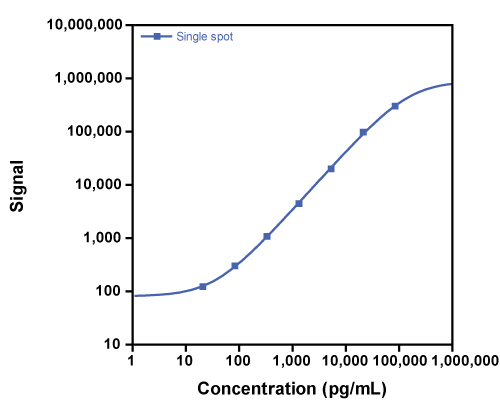Please note: This V-PLEX kit is currently being redeveloped. In the interim, MSD is offering to fulfill your order with the corresponding product on our U-PLEX platform. We recommend purchase of the
U-PLEX Mouse IL-17F Assay.
V-PLEX Plus Mouse IL-17F Kit Overview The V-PLEX Plus Mouse IL-17F Kit is optimized for long-term and multi-site biomarker studies that require reliable, reproducible results with lot-to-lot consistency. The V-PLEX Plus Mouse IL-17F Kit enables the sensitive detection of IL-17F in multiple sample types including serum, plasma, urine, and cell culture supernatant. To learn more about the advantages of V-PLEX assays
click here.
The V-PLEX Mouse IL-17F assay is available as an individual assay as well as in a multiplex combination with other Th17-related analytes in the V-PLEX Th17 Panel 1 Mouse Kit (catalog # K15246G, K15246D).
All V-PLEX kits come with coated plates, calibrators, labeled detection antibodies, optimized diluents, a comprehensive product insert, and a certificate of analysis.
V-PLEX Plus kits also include controls, wash buffer, and plate seals for added quality and convenience.
V-PLEX Mouse IL-17F Assay Features - Validated to measure mouse IL-17F in serum, plasma, urine, and cell culture supernatant
- Dynamic range: 51.4 – 52,000 pg/mL
- LLOQ: 320 pg/mL
Typical Data Calibration curve for the V-PLEX Plus Mouse IL-17F Kit was assessed and representative data is presented below.
Figure 1. V-PLEX Plus Mouse IL-17F Kit Calibration Curve 
IL-17F Analyte
Description - Mouse IL-17F is a cross-linked homodimer, a prototypical biomarker for Th17 cells, and is closely related to IL-17A. IL-17A can pair with IL-17F to form the IL-17A/F heterodimer of intermediate activity. IL-17F has greater affinity for IL-17RC receptor while IL-17A prefers IL-17RA, so some target-based differentiation is obtained when more than 1 of the possible 3 dimers is present. This cytokine is also found to inhibit the angiogenesis of endothelial cells and induce endothelial cells to produce IL-2, TGF-β, and MCP-1.
Disease Research Area - Autoimmune & Inflammation
Application Area - Cytokines & Chemokines, Inflammatory Injury